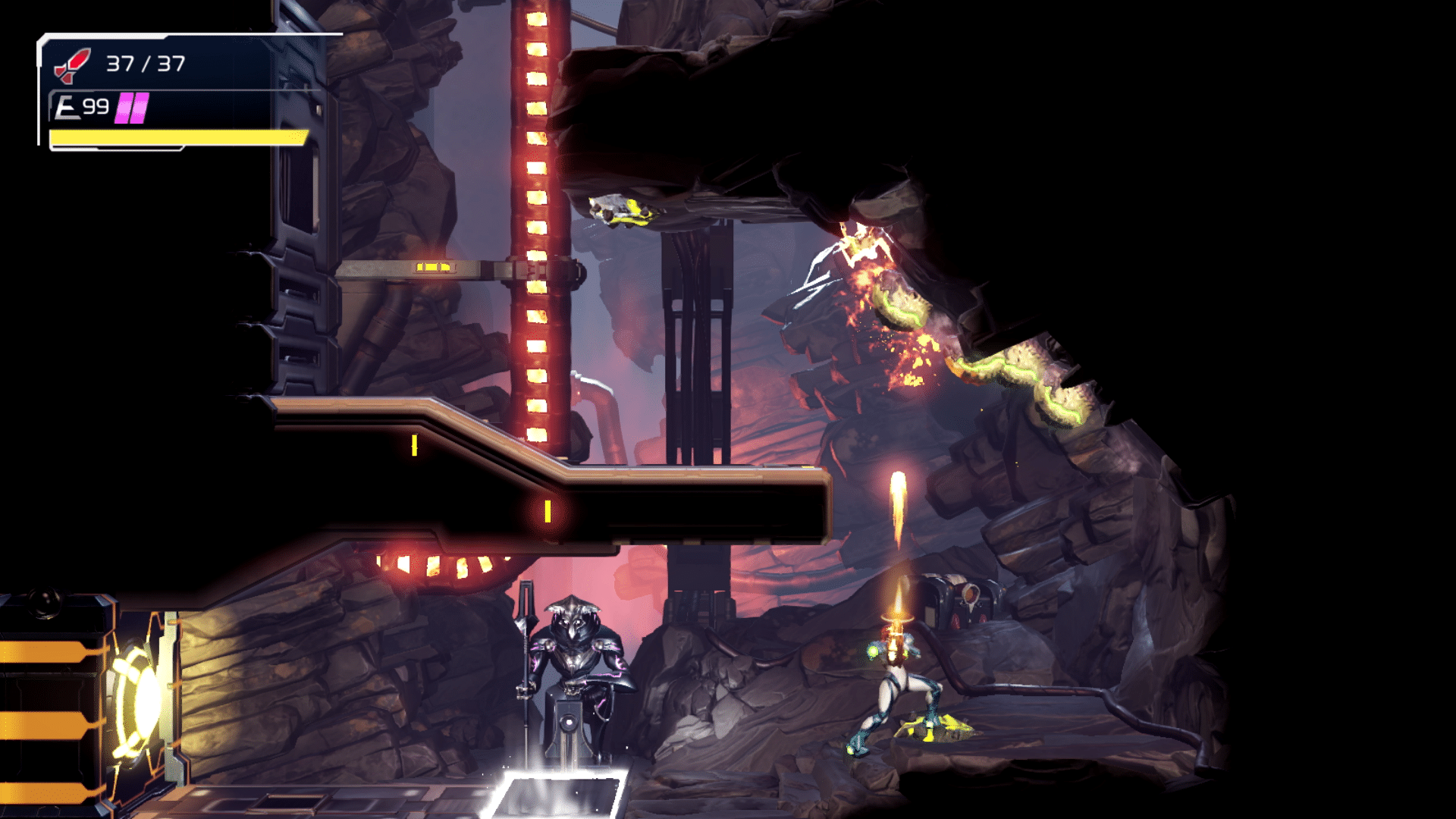Metroid Dread feels like a series ‘best of’ – plus it looks gorgeous on the new OLED Switch

Metroid Dread looks truly spectacular (Nintendo)
It may have been 19 years since the last original 2D Metroid game, but the formula is as timeless as ever.
Metroid Dread was certainly a surprise when it was announced at Nintendo’s 2021 E3 Direct, a project long-thought lost in development space. But it’s back in full force, not only to reinvigorate the sci-fi series but as a showcase for Nintendo’s new Switch OLED model.
We recently went hands-on with a preview of the game running on a Switch OLED. So far, it feels like a “best of” of the Metroid series.
As a 2D game, it retains the adventurous exploration perfected by Super Metroid on the SNES but includes some modern sensibilities like the melee counter from the recent remake Metroid: Samus Returns. There’s cinematic flair too with some stylish cutscenes and perspective shifts that bring the sidescroller to life. The odd first person moment adds a nod to the Prime series too.

For the most part, though, this is a return to Metroid roots. It’s a direct sequel to the Game Boy Advance title Metroid Fusion released in 2002, but don’t worry: the plot is recapped at the start for newcomers. From there Samus loses her powers while stranded on a mysterious planet as is standard for the series and, isolated, must explore an eerie, horrifying new world.
Except the powers you might expect don’t return right away. The morph ball, for instance, is nowhere to be found in the opening. Beyond the typical missiles and charge beam, suit upgrades allow Samus to climb certain walls and turn invisible. To get through small gaps, she can instead slide on the ground (and under some enemies) which feels incredibly satisfying.
It also maintains her momentum and fluidity, something that’s needed against the new EMMI robotic enemies. Appearing in specific parts of the map, these enemies cannot initially be destroyed and instead force Samus to use her speed of motion and abilities of deception to evade direct confrontation.
These sections emphasise speed over exploration, but offer a welcome change of pace and tie neatly into the overworld. Moreover, they heighten the tense horror atmosphere the series dabbles in and – not unlike Mr X or Lady Dimitrescu in the Resident Evil series – provide a sudden rush of urgency.

There are other more traditional bosses too: this preview included a battle against a hulking beast with a scorpion-like tail. Learn the attack pattern before sliding beneath it to finish it off in a stylish interactive scene.
Elsewhere you’ll want to take your time exploring to find secrets and soak up the atmosphere. Despite being a sidescroller, there’s depth to the gorgeous backgrounds of the world that merge sci-fi technology with organic alien structures, flowing water and pools of lava.
What’s more, these areas truly show off the new screen of the Switch OLED. It’s slightly larger than on the standard Switch (though the console size is otherwise unchanged) which adds to the immersion in handheld mode. The colours pop too, with Metroid Dread’s dark caverns and bursts of lighting perfect for showing off the increased contrast.
If you’re debating which Switch model to purchase, there really is no choice: OLED is the way forward.
Despite some classic musical themes and sound effects, the music isn’t quite as distinctive as in previous games and though divided up into individual areas, the world isn’t as immediately iconic. Backtracking will certainly aid this though with more time, while returning to defeat EMMIs with new powers should be cathartic.
Metroid Dread, then, has been worth the wait. Leaping, shooting, sliding and parrying as Samus has never felt so fast and fluid. It might be a new game on a new console, but so far Dread feels like a homecoming.
Metroid Dread will release on Nintendo Switch on 8 October, along with the Switch OLED model.
For more gaming news, follow Gaymeo on Facebook and Twitter. You can also email us with any news or tips on [email protected]

